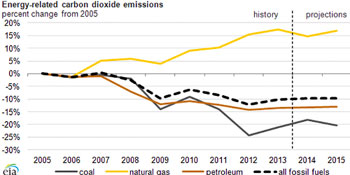As a complement to EPA’s new carbon rules for power plants, the White House issued a report to help Americans understand how climate change impacts the health of Americans.
Because we can’t see carbon pollution, many people aren’t aware of its health impacts, which range from respiratory illnesses to higher incidences of vector-borne disease, such as Lyme.
Air Pollution
Carbon emissions are pushing temperatures higher, which leads to more ground-level ozone, a key component of smog – which impairs lung function.
In the west, higher temperatures combined with drought are resulting in frequent, expansive and extremely intense wildfires, filling the air with particulate matter, carbon monoxide, nitrogen oxides, and other pollutants. Exposure to smoke is bringing people to the hospital with lung illnesses, bronchitis, chest pain, respiratory infections and more asthma.
Since power plants are too often sited in lower income neighborhoods, African-American and Latino children have the highest incidence of asthma and other respiratory health problems.

Extreme-Heat Events
As extreme heat becomes more common and widespread during the summer, there are more hospitalizations and deaths – 7800 people died in the past decade.
Infectious Diseases
Warmer temperatures are connected with the rising incidence of Lyme, dengue fever, West Nile virus and Rocky Mountain spotted fever. Without cold enough winters, insects do not die off and populations increase with every years. There were 30,000 reported cases of Lyme disease in 2012 alone, according to the Centers for Disease Control and Prevention.
While cutting power plant carbon emissions 30% by 2030 (from 2005 levels), other air pollutants will also decrease. Particulate matter, nitrogen oxides, and sulfur dioxide will decline by about 25%, and American families will benefit from a drop in soot and smog alone, says the report. In the first year alone, EPA expects 100,000 fewer asthma attacks and 2,100 fewer heart attacks, and the benefits increase with each passing year.
Read the 7-page report, which details health benefits from other regulations already approved (such as mercury emissions) and actions in progress now, such as re-committing to environmental justice:
